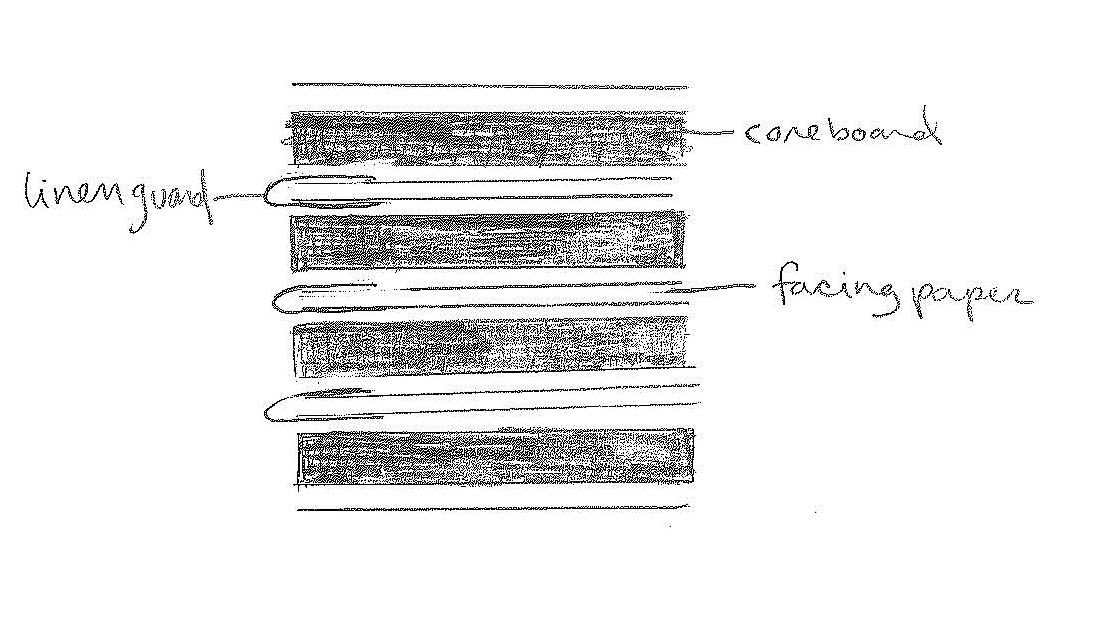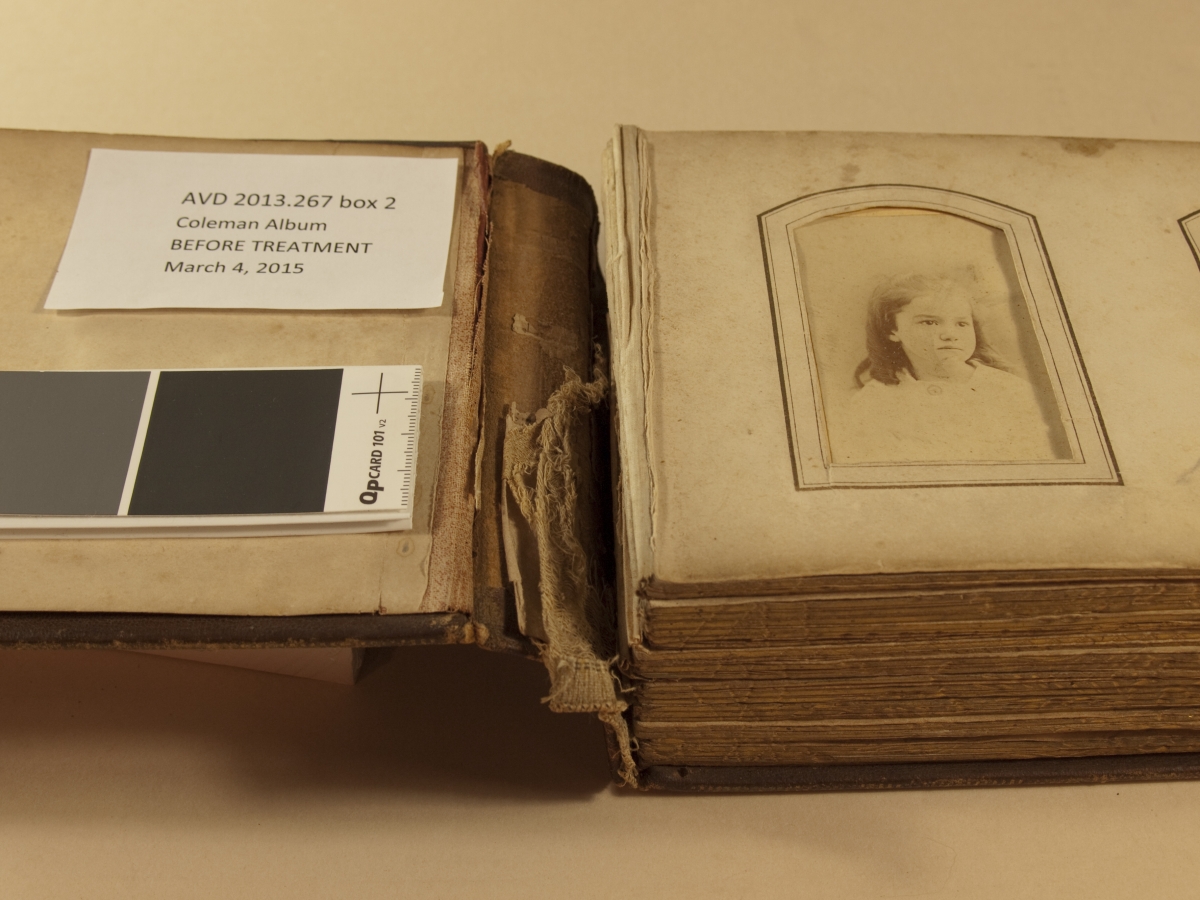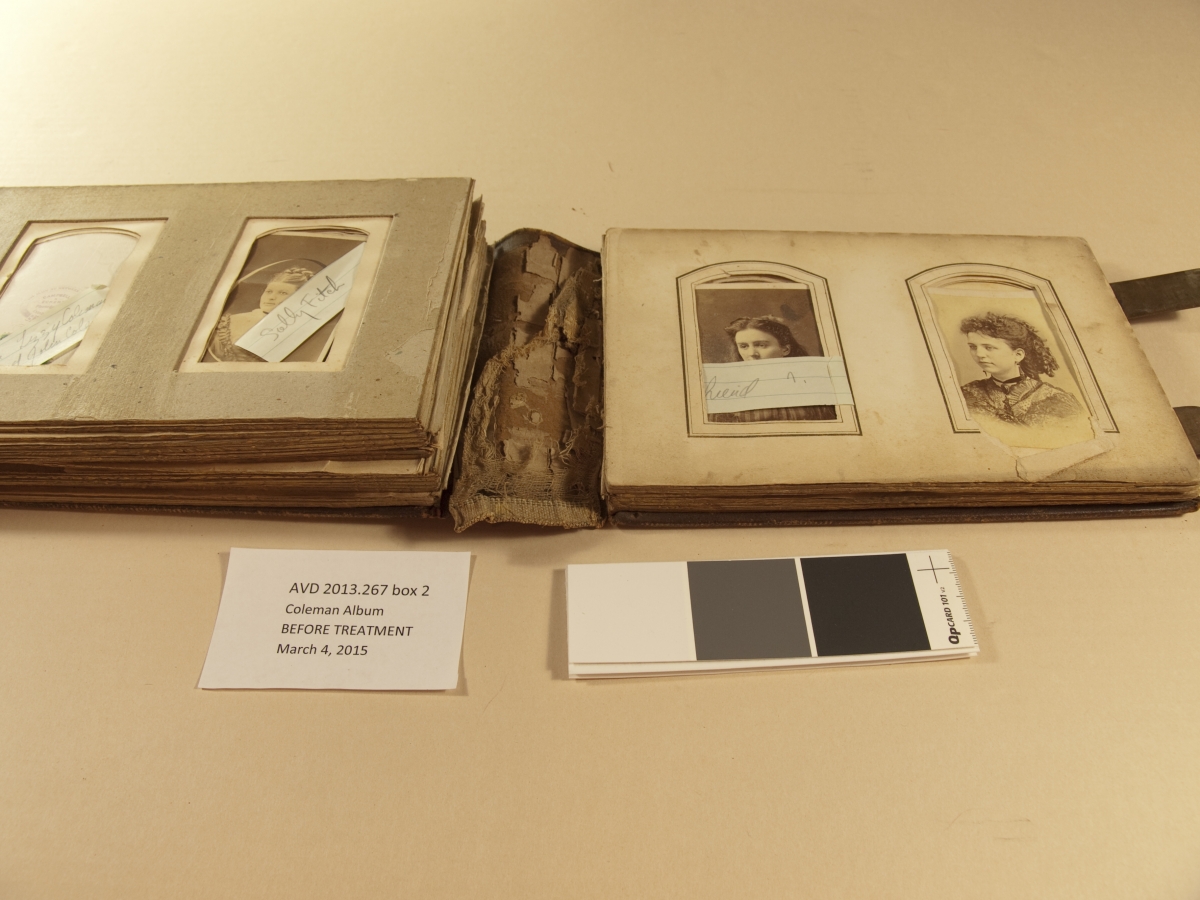Part One - Discovery
A Victorian-era album belonging to the Coleman family was brought into the lab for re-housing, possible treatment and a bit of problem solving. The album had two obvious issues. The first being that it was not structurally sound, and repeated handling in the current condition would cause more damage. The second issue was the small pieces of note paper tucked into the album used to identify the people in the photographs. These papers could easily become misplaced or lost. I needed to come up with a safe and secure way to preserve the sitters’ identities and make the album safe to handle. But first I needed to understand the structure of this album.
This Victorian-era cartes de visite album is case bound with a guarded leaf, pre-cut mat structure and the end sheets consist of single leaf moiré ribbed paper. Whoa, whoa – what does all of that mean?? So, just like our modern hardcover books, the text block and cover are made separately and then attached to one another with end sheets. Since this album was made using single end sheets – a piece of moiré for the pastedown, a separate piece for the flyleaf, connected to each other with a strip of starched cloth – the attachment of text block to cover is very weak and susceptible to failure through repeated use. While the cover was still intact, the front board of this album had completely detached from the text lock.

The guarded leaf, pre-cut mat text block structure is a bit complicated, but I’ll break it down for you. Albums of this era were made for cartes de visite, small portraits mounted on rigid paperboard. The leaves of the album were therefore thicker than the cartes de visite, and had window mats cut out into which the photos were inserted. This not only looked nice, but protected the images from abrasion. The leaves were attached to one another with linen, and this is where it gets tricky: the leaves have three layers, a board stock core that is covered with decorative facing paper on each side. The linen guards are attached to the board between the paper and board, and are then attached to the facing leaf. So linen guards are attached to the verso of leaf A and the recto of leaf B, the verso of B is attached to the recto of C, so on and so forth. Unfortunately, linen has very poor fold strength, which is exactly how it’s being used in this structure. As a result, the linen weakens and breaks at the folds and the album leaves become detached from one another.


So after I opened this album and the cover fell off, I turned the first page to find that it has completely detached from its neighbor! Just to further complicate things, not every leaf has gone solo; some have partners, some do not. This album, in its current state, is very difficult to handle.
Riveting stuff, right? Stay tuned for Part Two – Thinking Out Loud
Sharon Fickeissen is a Conservation Technician at Hagley
